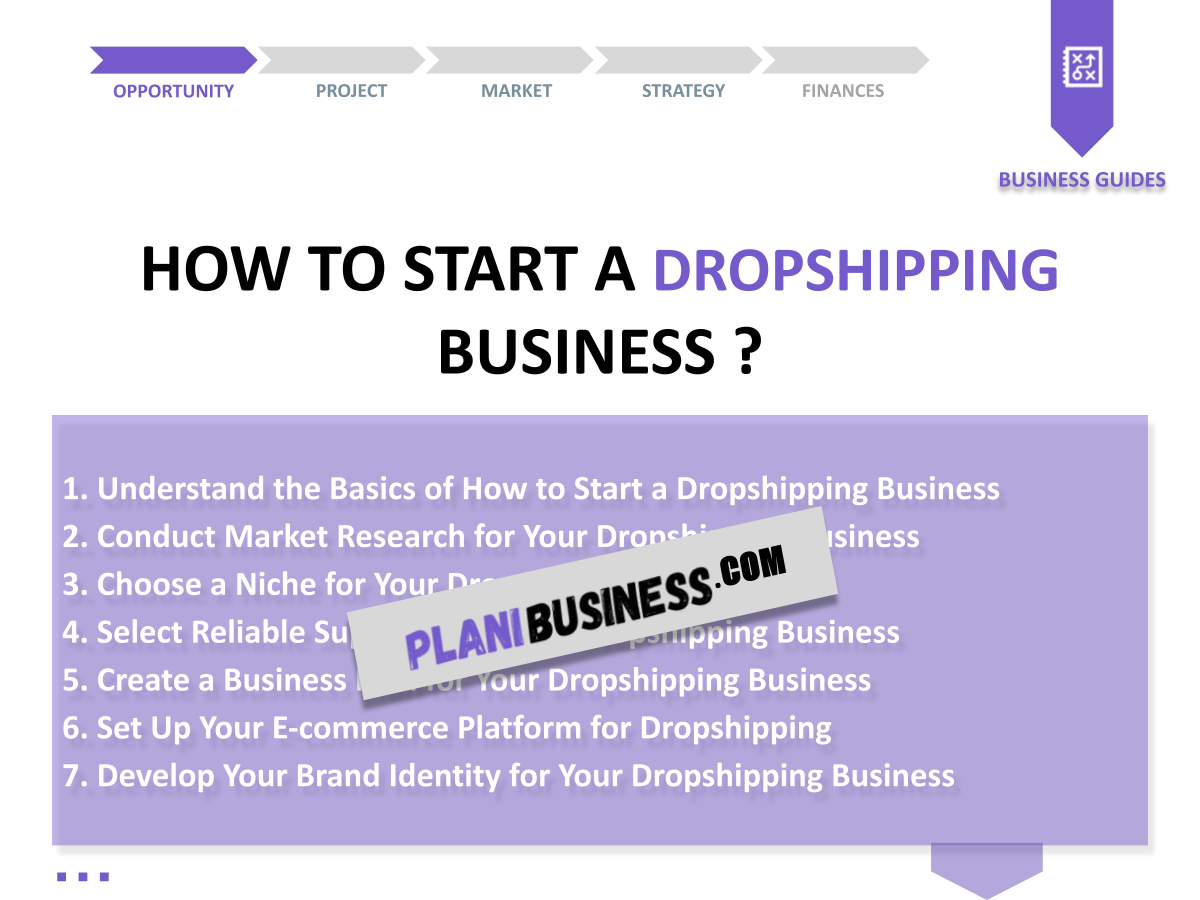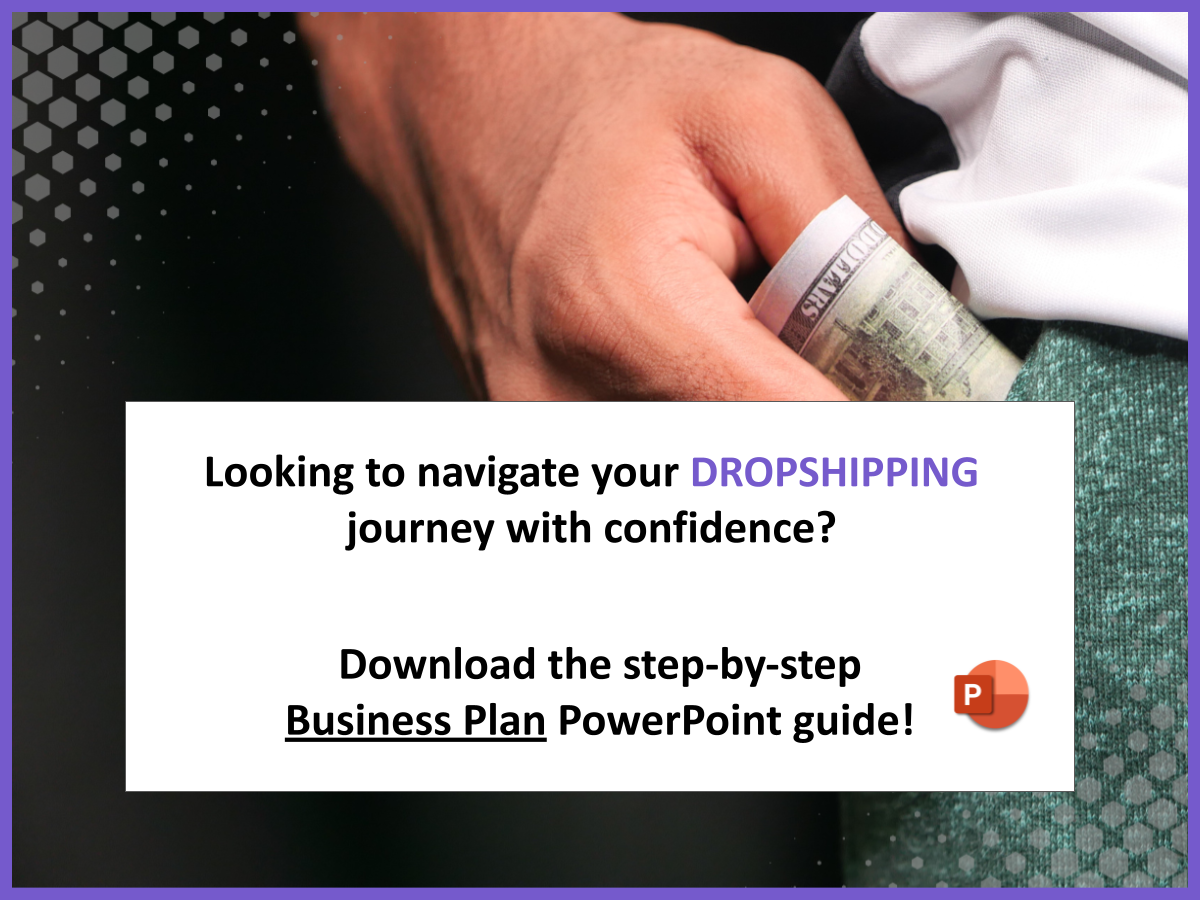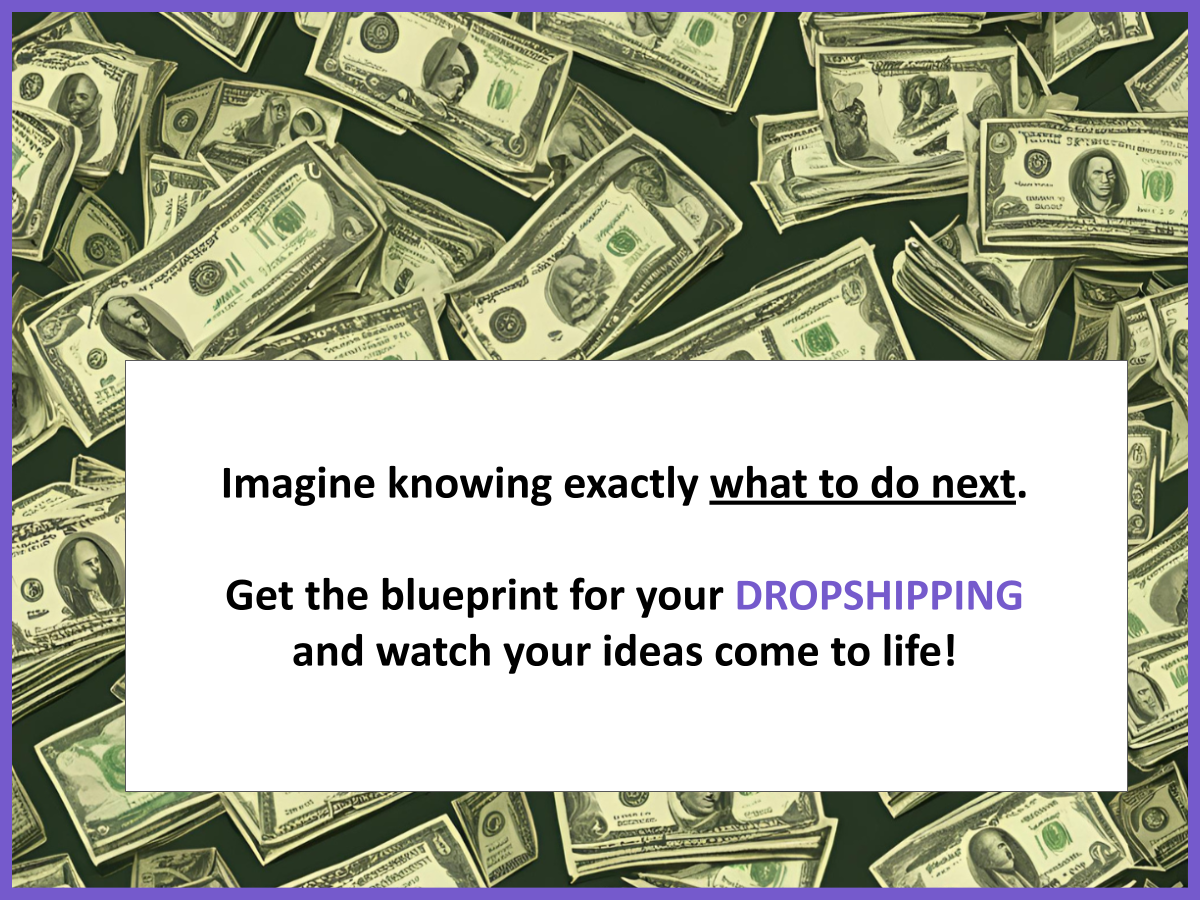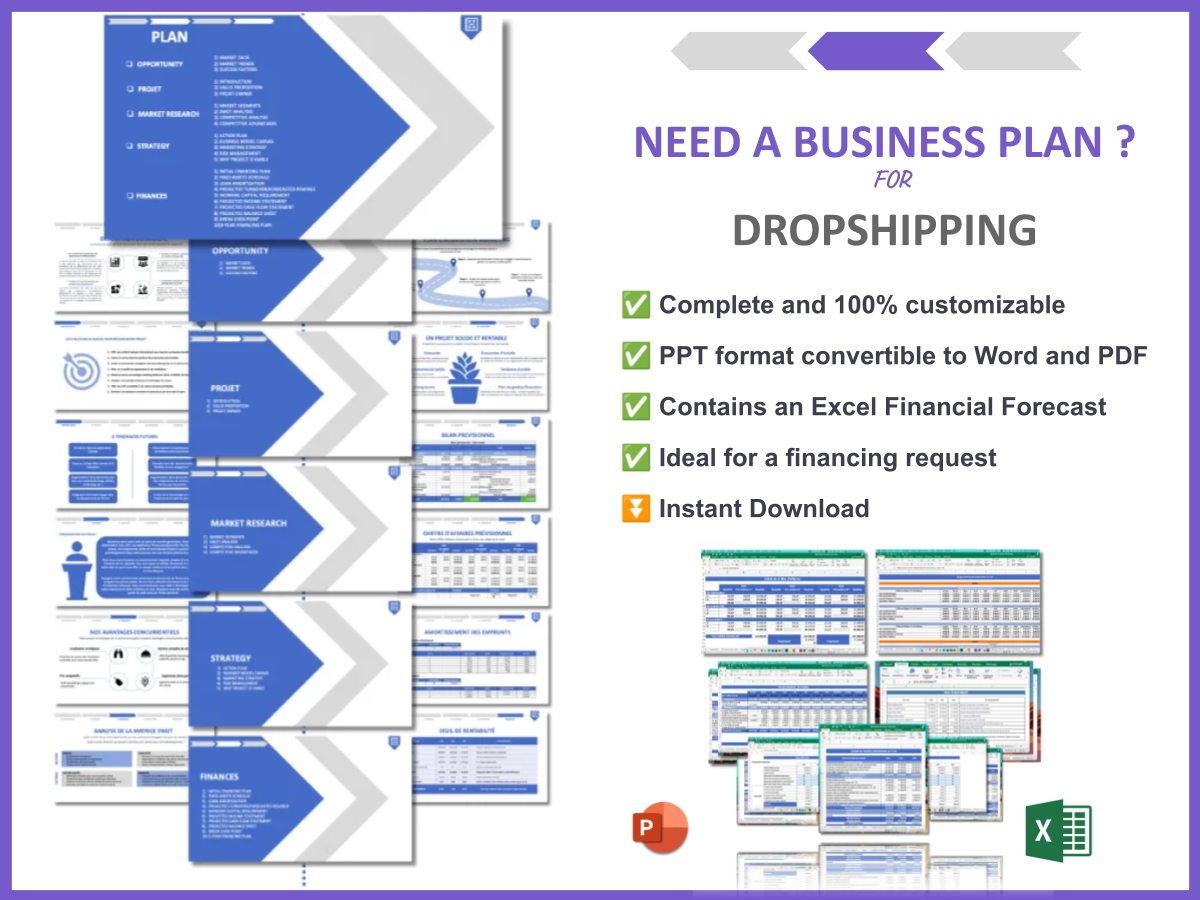Are you thinking about starting a dropshipping business? You’re not alone! According to recent studies, nearly 27% of online businesses are dropshipping-focused. How to Start a Dropshipping business is about grasping the concept of selling products without holding inventory. Instead, you partner with suppliers who fulfill orders directly to your customers. This model allows you to operate with lower overhead costs and greater flexibility, making it an attractive option for aspiring entrepreneurs.
In this article, we will cover essential steps to help you successfully launch your dropshipping business. Here’s what you can expect:
- Understanding the basics of dropshipping
- Conducting thorough market research
- Selecting the right niche for your business
- Finding reliable suppliers
- Creating a solid business plan
- Setting up your e-commerce platform
1. Understand the Basics of How to Start a Dropshipping Business
First off, it’s crucial to understand what dropshipping really means. In simple terms, dropshipping is a retail fulfillment method where a store doesn’t keep the products it sells in stock. Instead, when you sell a product, you purchase the item from a third party and have it shipped directly to the customer. This means you never see or handle the product. Here are some key points:
- Low overhead costs: Since you don’t have to invest in inventory upfront, your startup costs are significantly lower.
- Flexibility: You can operate from anywhere with an internet connection, making it a great option for those seeking location independence.
- Wide product range: You can offer a diverse range of products without the risk of unsold inventory.
However, it’s not all sunshine and rainbows. There are challenges, such as relying on suppliers for inventory and shipping, which can impact your customer service. Understanding these nuances is essential for success in this business model.
2. Conduct Market Research for Your Dropshipping Business
Market research is your best friend when it comes to starting a dropshipping business. It helps you identify trends, understand your target audience, and assess the competition. Here are some steps to effectively conduct your research:
- Identify your target market: Who are your potential customers? What are their interests, needs, and pain points?
- Analyze competitors: Look at other dropshipping stores in your niche. What are they doing well? What gaps can you fill?
- Use research tools: Platforms like Google Trends and social media can help gauge interest in specific products. For instance, check trending hashtags or popular posts related to your niche.
| Research Tools | Purpose |
|---|---|
| Google Trends | Analyze product demand over time |
| Social Media Platforms | Gauge customer interests and trends |
| Keyword Research Tools | Identify popular search terms |
By thoroughly understanding your market, you can make informed decisions about what products to sell and how to position your dropshipping business for success. Remember, knowledge is power, especially in the competitive world of e-commerce!
3. Choose a Niche for Your Dropshipping Business
Choosing the right niche is one of the most critical steps in learning how to start a dropshipping business. Your niche should align with your interests and market demand. Here’s how you can select a profitable niche:
- Identify your passions: Start by listing your interests or hobbies. This will make the work more enjoyable and sustainable.
- Research market demand: Use tools like Google Trends to see if there’s a growing interest in your niche. A niche with rising search interest can lead to higher sales.
- Assess competition: Analyze existing competitors in your niche. A highly competitive market may be challenging for newcomers, while a niche with little competition could indicate low demand.
Here’s a quick checklist to help you evaluate potential niches:
- Is the niche something you are passionate about?
- Are there enough products available from suppliers?
- Is the target audience large enough to sustain your business?
Finding a balance between your interests and market demand is key. You want a niche that excites you but also has potential for profitability.
4. Select Reliable Suppliers for Your Dropshipping Business
Once you’ve identified your niche, the next step in how to start a dropshipping business is selecting reliable suppliers. Your suppliers are crucial to your success because they handle inventory and shipping, so you need to choose wisely. Here are some tips:
- Use reputable platforms: Platforms like AliExpress, Oberlo, and SaleHoo can connect you with vetted suppliers. Always read reviews and ratings before making a decision.
- Order samples: Before committing to a supplier, order samples of their products. This allows you to assess quality and shipping times firsthand.
- Communicate effectively: Establish clear communication with your suppliers. Discuss shipping times, return policies, and how they handle out-of-stock items.
| Supplier Platforms | Features |
|---|---|
| AliExpress | Wide variety of products, easy to use, competitive pricing |
| Oberlo | Integrates seamlessly with Shopify, user-friendly interface |
| SaleHoo | Directory of verified suppliers, helps avoid scams |
Choosing the right suppliers can make or break your dropshipping business. Take the time to research and build relationships with them, as they will be your partners in delivering products to your customers. A reliable supplier not only provides quality products but also ensures timely deliveries, which is essential for customer satisfaction.
5. Create a Business Plan for Your Dropshipping Business
Having a solid business plan is essential when you’re figuring out how to start a dropshipping business. A well-thought-out business plan serves as a roadmap for your venture, outlining your goals, strategies, and financial projections. Here’s what to include in your dropshipping business plan:
- Executive Summary: A brief overview of your business, including your niche and target market.
- Market Analysis: Insights from your market research, including competitor analysis and market trends.
- Marketing Strategy: How you plan to promote your products and attract customers.
- Financial Projections: Estimated startup costs, revenue forecasts, and break-even analysis.
I recommend checking out this business plan template for Dropshipping. It’s super detailed and can save you a ton of time! Using a structured template can help ensure you don’t miss any crucial elements of your plan.
Remember, your business plan is a living document. As you learn more about your market and make adjustments, be sure to update your plan accordingly.
6. Set Up Your E-commerce Platform for Dropshipping
Your e-commerce platform is the foundation of your dropshipping business. Choosing the right platform can make a significant difference in your operations and customer experience. Here’s how to set it up:
- Select your platform: Popular choices include Shopify, WooCommerce, and BigCommerce. Each has its unique features, so pick one that aligns with your business needs.
- Choose a domain name: Your domain name should reflect your brand and be easy to remember. Make it catchy and relevant to your niche.
- Design your website: Create a user-friendly layout that showcases your products. Use high-quality images and clear descriptions to enhance the shopping experience.
Here’s a quick comparison of popular e-commerce platforms:
| Platform | Key Features | Best For |
|---|---|---|
| Shopify | Easy to use, built-in payment processing, various templates | Beginners and small businesses |
| WooCommerce | Highly customizable, integrates with WordPress, extensive plugins | Existing WordPress users |
| BigCommerce | Robust built-in features, great for scaling, no transaction fees | Medium to large businesses |
Once your platform is set up, ensure that you optimize it for SEO to increase visibility. Use relevant keywords in your product descriptions and meta tags to improve your chances of being found online.
7. Develop Your Brand Identity for Your Dropshipping Business
Your brand identity is crucial in setting your dropshipping business apart from the competition. It encompasses your brand’s personality, values, and overall aesthetic. Here are some key components to consider when developing your brand identity:
- Logo Design: Create a memorable logo that reflects your brand’s essence. Consider hiring a professional designer or using tools like Canva for DIY options.
- Color Palette: Choose colors that resonate with your target audience and evoke the right emotions. For example, blue often conveys trust, while red can create excitement.
- Brand Messaging: Develop a clear and consistent message that communicates your brand’s value proposition. This should include your mission statement and the unique benefits you offer.
To ensure consistency, create a brand style guide. This document will help you maintain uniformity across all your marketing materials, from your website to social media posts. Consistency builds trust and recognition among your customers.
8. Market Your Dropshipping Business Effectively
Marketing is vital for the success of your dropshipping business. Without effective marketing, even the best products can go unnoticed. Here are some strategies to help you reach your target audience:
- Social Media Marketing: Utilize platforms like Instagram, Facebook, and Pinterest to showcase your products. Create engaging content that resonates with your audience and encourages sharing.
- Email Marketing: Build an email list and send regular newsletters. Offer exclusive discounts and updates to keep your audience engaged and drive repeat sales.
- Search Engine Optimization (SEO): Optimize your website for search engines by using relevant keywords in product descriptions and blog content. This can help improve your visibility and attract organic traffic.
Consider running paid advertising campaigns on social media or Google Ads to quickly gain traction. Start with a small budget to test what works best for your audience.
| Marketing Strategy | Description | Benefits |
|---|---|---|
| Social Media Marketing | Engage with customers through posts and ads | Build brand awareness and community |
| Email Marketing | Send targeted emails with promotions | Drive sales and customer loyalty |
| SEO | Optimize content for search engines | Increase organic traffic and visibility |
Effective marketing requires consistent effort and adaptation. Monitor your campaigns’ performance and adjust your strategies based on what resonates best with your audience. Remember, the more you connect with your customers, the more likely they are to choose your dropshipping store over competitors.
9. Handle Customer Service for Your Dropshipping Business
Excellent customer service can set your dropshipping business apart from the competition. As a retailer, you are the face of the brand, and how you handle customer inquiries and complaints can significantly impact your reputation. Here are some best practices for managing customer service:
- Set Response Time Goals: Aim to respond to customer inquiries within 24 hours. Quick responses show customers that you value their time and business.
- Create a FAQ Section: Anticipate common questions and provide answers on your website. This can reduce the number of inquiries and improve customer satisfaction.
- Use Customer Feedback: Encourage reviews and feedback to understand areas for improvement. Actively addressing concerns can turn negative experiences into positive ones.
Here’s a simple checklist to ensure you’re providing top-notch customer service:
- Have a dedicated customer service email or chat support.
- Train your team on product knowledge and customer interaction.
- Follow up with customers after a purchase to ensure satisfaction.
By prioritizing customer service, you can build trust and foster loyalty among your customers, which is essential for the long-term success of your dropshipping business.
10. Track and Analyze Your Dropshipping Business Performance
Monitoring your business performance is crucial for making informed decisions as you learn how to start a dropshipping business. Regular analysis helps you identify what’s working and what needs improvement. Here are some key metrics to track:
- Sales Data: Keep an eye on your sales figures to understand your revenue trends. Look for patterns in high and low sales periods.
- Customer Acquisition Cost (CAC): Calculate how much you spend to acquire a new customer. This metric can help you determine the effectiveness of your marketing efforts.
- Website Traffic: Use tools like Google Analytics to track how many visitors your site receives and where they come from.
To help you visualize your performance, here’s a comparison of key metrics:
| Metric | Importance |
|---|---|
| Sales Revenue | Indicates overall business performance |
| Conversion Rate | Shows effectiveness of your website in turning visitors into buyers |
| Customer Retention Rate | Measures loyalty and satisfaction of your existing customers |
Regularly reviewing these metrics allows you to make data-driven decisions. Adjust your strategies based on insights gained from your analysis to optimize your dropshipping operations. The more informed your decisions, the better your chances for success!
11. Create a Unique Selling Proposition for Your Dropshipping Business
Your Unique Selling Proposition (USP) is what sets your dropshipping business apart from competitors. It’s essential to clearly define your USP to attract and retain customers. Here are some steps to help you develop a compelling USP:
- Identify Your Strengths: What do you offer that others don’t? This could be unique products, exceptional customer service, or faster shipping times.
- Understand Your Target Audience: Know what your customers value most. Tailor your USP to meet their specific needs and desires.
- Communicate Clearly: Ensure your USP is prominently displayed on your website and marketing materials. Make it easy for customers to understand what makes you special.
Here’s a simple formula to create your USP:
For [target audience], [your product/service] is the only [category] that [benefit] because [reason].
For example, “For busy parents, our online store is the only dropshipping business that offers eco-friendly toys with fast shipping because we care about your child’s future.”
12. Address Legal Considerations for Your Dropshipping Business
Understanding the legal landscape is crucial when you’re starting a dropshipping business. You want to ensure that you’re compliant with all regulations to avoid any legal issues down the line. Here are key legal considerations:
- Business Registration: Register your business according to your local laws. This may involve choosing a business structure, like LLC or sole proprietorship.
- Licenses and Permits: Depending on your location and products, you may need specific licenses or permits to operate legally.
- Tax Identification Numbers: Obtain necessary tax IDs for your business to comply with tax regulations.
Consult with a legal expert to ensure that you understand all requirements for your specific situation. Here’s a quick table summarizing legal considerations:
| Legal Aspect | Description |
|---|---|
| Business Registration | Officially register your business name and structure |
| Licenses/Permits | Obtain necessary permissions to sell specific products |
| Tax Compliance | Ensure proper tax identification and reporting |
Taking care of these legal aspects early on can save you from headaches later. Being compliant not only protects your business but also builds trust with your customers.
13. Network with Other Dropshippers and Entrepreneurs
Networking is an often-overlooked aspect of running a successful dropshipping business. Connecting with other entrepreneurs can provide valuable insights, support, and potential partnerships. Here are ways to build your network:
- Join Online Forums: Participate in dropshipping forums and communities where you can ask questions and share experiences. Websites like Reddit and dedicated dropshipping forums are great places to start.
- Attend Local Meetups: Look for local business meetups or workshops. These can be fantastic opportunities to connect face-to-face with like-minded individuals.
- Engage in Social Media Groups: Join Facebook groups or LinkedIn communities focused on dropshipping. Engaging in discussions can lead to new friendships and collaborations.
Here’s a quick list of networking benefits:
- Access to shared knowledge and resources
- Opportunities for collaboration
- Support from fellow entrepreneurs during challenges
Networking can open doors you didn’t even know existed. By building relationships within the dropshipping community, you can gain insights that can help you grow your business and navigate challenges more effectively.
Conclusion
In conclusion, starting a dropshipping business can be an exciting and rewarding venture if you follow the right steps. From understanding the basics and conducting thorough market research to selecting reliable suppliers and developing a strong brand identity, each element plays a crucial role in your success. Remember to prioritize customer service, track your performance, and continuously adapt your strategies based on market feedback.
As you embark on this journey, consider deepening your knowledge with additional resources. Check out our articles on how to create a SWOT Analysis for Dropshipping and learn how to plan a Dropshipping Marketing Strategy. These guides will provide valuable insights and help you build a solid foundation for your business.
With dedication and the right approach, you can turn your dropshipping aspirations into a thriving reality. Good luck!
FAQ
- What is dropshipping?
Dropshipping is a retail fulfillment method where the store does not keep the products it sells in stock. Instead, when a product is sold, the store purchases the item from a third party and has it shipped directly to the customer. - How do I start a dropshipping business?
To start a dropshipping business, you need to choose a niche, conduct market research, select reliable suppliers, create an e-commerce website, and develop a marketing strategy to attract customers. - What are the best platforms for dropshipping?
Popular platforms for dropshipping include Shopify, WooCommerce, and BigCommerce. Each platform offers different features, so choose one that fits your business needs. - How do I find suppliers for my dropshipping business?
You can find suppliers through platforms like AliExpress, Oberlo, and SaleHoo. It’s important to vet suppliers by checking reviews and ordering samples to ensure quality. - What are the legal requirements for dropshipping?
Legal requirements vary by location but generally include registering your business, obtaining necessary licenses and permits, and ensuring tax compliance. - How do I market my dropshipping business?
Marketing strategies for your dropshipping business can include social media marketing, email marketing, SEO, and paid advertising. It’s crucial to find the right mix that resonates with your target audience. - What are the challenges of dropshipping?
Common challenges in dropshipping include managing supplier relationships, handling customer service issues, and competing with other retailers. It’s important to stay organized and responsive to succeed. - How do I handle customer service in dropshipping?
To manage customer service effectively, set response time goals, create a FAQ section on your website, and actively seek feedback to improve your service. - Can I run a dropshipping business from anywhere?
Yes! One of the benefits of dropshipping is that you can run your business from anywhere with an internet connection, giving you flexibility and location independence. - What is the profit margin for dropshipping?
Profit margins in dropshipping can vary widely depending on the niche and pricing strategy. Typically, margins range from 10% to 30%, but careful pricing and product selection can improve profitability.







